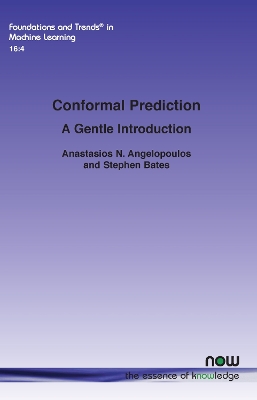Foundations and Trends® in Machine Learning
1 total work
Black-box machine learning models are now routinely used in high-risk settings, like medical diagnostics, which demand uncertainty quantification to avoid consequential model failures. Conformal prediction is a user-friendly paradigm for creating statistically rigorous uncertainty sets/intervals for the predictions of such models. One can use conformal prediction with any pre-trained model, such as a neural network, to produce sets that are guaranteed to contain the ground truth with a user-specified probability, such as 90%. It is easy-to-understand, easy-to-use, and in general, applies naturally to problems arising in the fields of computer vision, natural language processing, deep reinforcement learning, amongst others.
In this hands-on introduction the authors provide the reader with a working understanding of conformal prediction and related distribution-free uncertainty quantification techniques. They lead the reader through practical theory and examples of conformal prediction and describe its extensions to complex machine learning tasks involving structured outputs, distribution shift, time-series, outliers, models that abstain, and more. Throughout, there are many explanatory illustrations, examples, and code samples in Python. With each code sample comes a Jupyter notebook implementing the method on a real-data example.
This hands-on tutorial, full of practical and accessible examples, is essential reading for all students, practitioners and researchers working on all types of systems deploying machine learning techniques.
In this hands-on introduction the authors provide the reader with a working understanding of conformal prediction and related distribution-free uncertainty quantification techniques. They lead the reader through practical theory and examples of conformal prediction and describe its extensions to complex machine learning tasks involving structured outputs, distribution shift, time-series, outliers, models that abstain, and more. Throughout, there are many explanatory illustrations, examples, and code samples in Python. With each code sample comes a Jupyter notebook implementing the method on a real-data example.
This hands-on tutorial, full of practical and accessible examples, is essential reading for all students, practitioners and researchers working on all types of systems deploying machine learning techniques.
